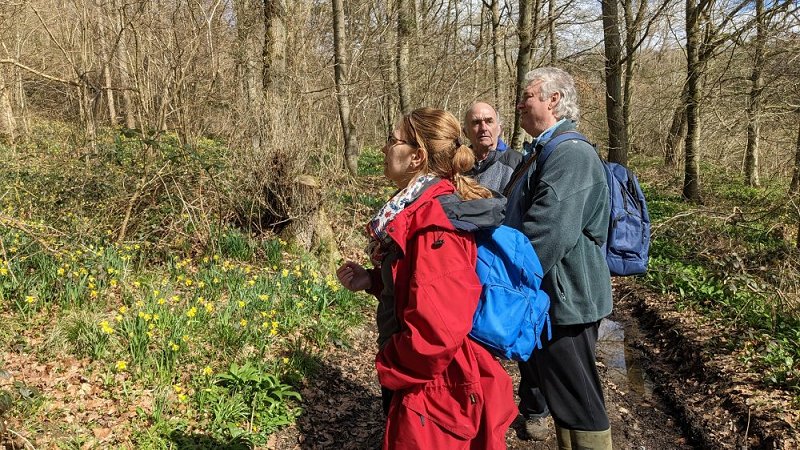

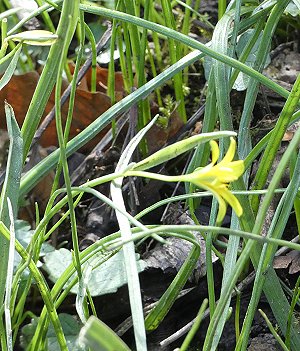 Yellow Star of Bethlehem Gagea lutea |
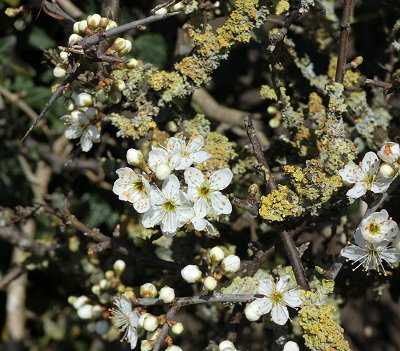 Blackthorn |
On the plus side blackthorn and the Yellow Star of Bethlehem were still in flower, with four spikes of the Star, albeit two had been nibbled by either deer or rabbit, both of which are present.
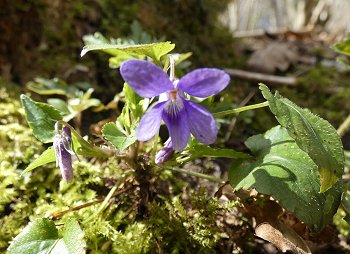 Early dog violet Viola reichenbachiana |
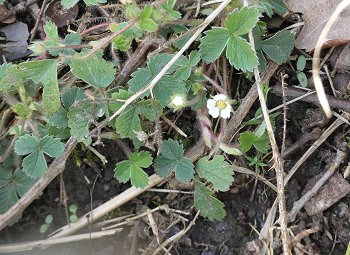 Barren strawberry Potentilla sterilis |
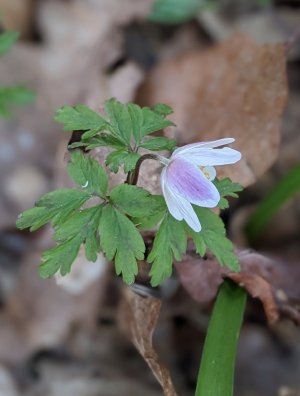 Wood anemone |
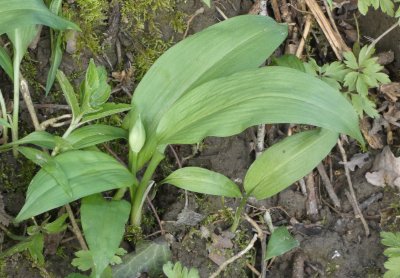 Wild garlic (Ramsnons) |
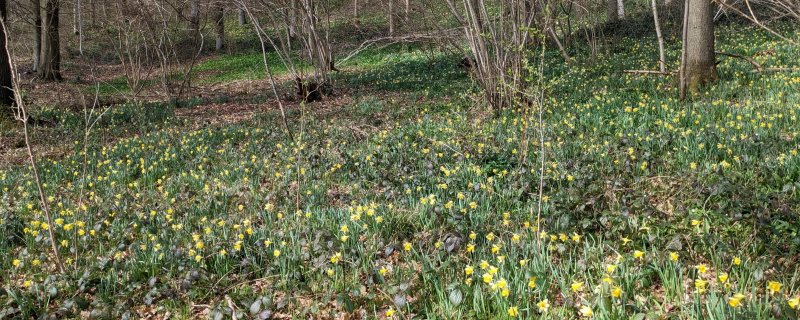
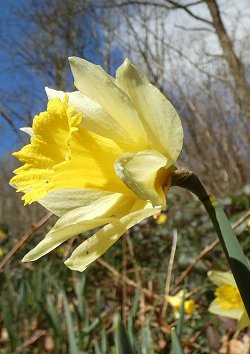 The wood anemones, primroses and especially the wild daffodils were looking wonderful in the dappled sunshine, and the early dog violets were also showing well – we did not see any common dog violets in flower but we think we saw the leaves. The other violet with flowers was the sweet or fragrant V. odorata. One of the daffodils was what Nicky referred to as a “non-conformist“ with 8 petals! It is always worth checking in a large spread of daffodils as there are usually a few sports – the same is true of primroses that quite often have 4, or more usually 6, petals instead of the regulation 5.
The wood anemones, primroses and especially the wild daffodils were looking wonderful in the dappled sunshine, and the early dog violets were also showing well – we did not see any common dog violets in flower but we think we saw the leaves. The other violet with flowers was the sweet or fragrant V. odorata. One of the daffodils was what Nicky referred to as a “non-conformist“ with 8 petals! It is always worth checking in a large spread of daffodils as there are usually a few sports – the same is true of primroses that quite often have 4, or more usually 6, petals instead of the regulation 5.
The air was cool to start with, but at lunchtime it had warmed up enough for some insects to emerge. We saw several lovely yellow male brimstones (the iconic “butter(y) fly”) and two or three commas basking in the sun at the southern edge of the wood. plus two or three different kinds of bees, and fairly large numbers of the extraordinary bee-flies with their long proboscis. They remind me of humming-bird hawkmoths, or even tiny hummingbirds. They seemed particularly attracted to the primroses, hovering in front of each flower in turn to drink the nectar. I did also see one feasting on a violet flower. These extraordinary insects parasitise the nests of miner bees (see this Guardian article).
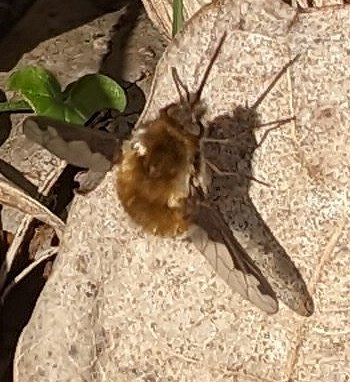 Bee-fly (note the long proboscis – and its shadow) |
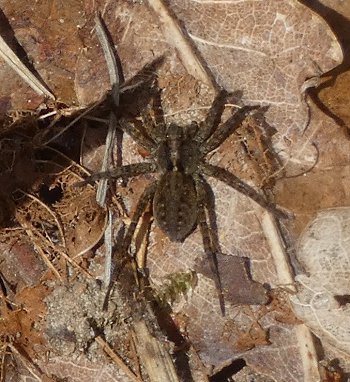 Spider in leaf litter |
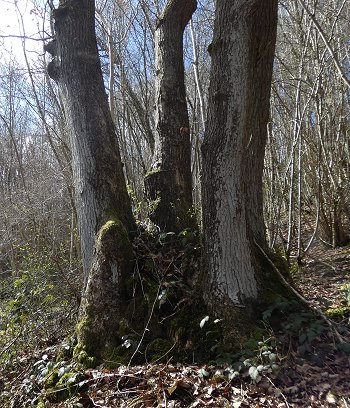 Coppice oak |
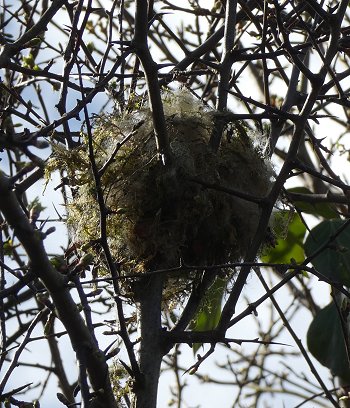 Long-tailed tit nest |
There was evidence of four mammals: Badger, Rabbit. Grey squirrel (drays) and Roe deer.
We saw a few fungi (awaiting id) but obviously Spring is not the best time of year for them.
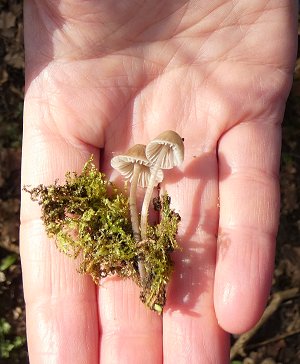 Small mushroom |
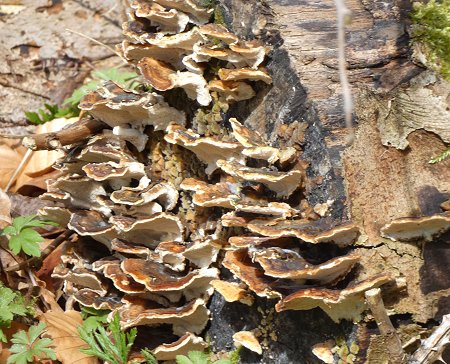 Bracket fungus |
To see all the photos taken on the trip please see here (this will open in a new tab):
[Ed: this is a draft. Please click on the relevant tab. The data is held on a spreadsheet which will be updated in due course]. I have included the plant lsits from 2009 and 2021 for comparison.
Gill Smith 2023
Back to top| © Ryedale Natural History Society 2023, Photos © Gill Smith, Nicky Johnson 2023 |